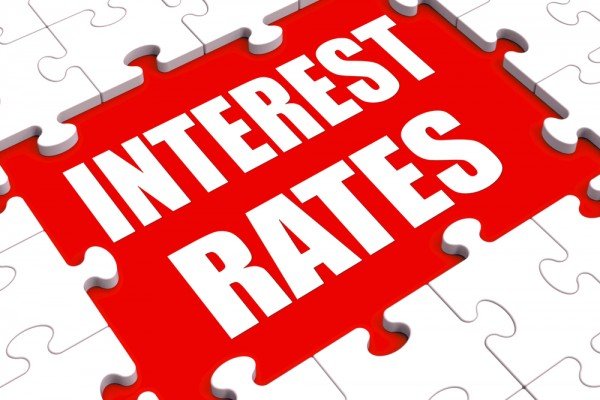Interest rates: What will the rise mean for you?
The rise in base rates will produce both winners and losers.The winners will include 45 million savers, who are likely to see higher returns from savings accounts. A number of providers have already announced they will be increasing savings rates in line with the rise.Those planning on buying an annuity to finance their retirement will also benefit.But for at least four million households with variable rate mortgages, monthly payments are set to rise immediately.So how will you be affected?
Variable rate mortgages
Across the UK, 9.2 million households have a mortgage.Of these, around half are on a standard variable rate (svr) or a tracker rate, amounting to between four and five million households.These are the people who will be most affected, as their monthly payments will increase.
- Kamal Ahmed: Are more rate rises ahead?
- Five things we have learnt from the Bank
- How the Bank policymakers voted
- Rate rise: Winners and losers
Those on such variable rates tend to be older, and with relatively small outstanding mortgage balances.On average, such households owe £89,000, and will face rises of between £11 and £12 a month, according to UK Finance.Change on variable rate mortgagesOutstanding balancecurrent monthly paymentincrease£50,000£225£6£100,000£450£13£150,000£675£19£200,000£900£25£250,000£1,125£32£300,000£1,350£39Source: UK FinanceBase: current mortgage rate 2.53%25 year term
Fixed rate mortgages
The vast majority of new mortgage loans - 94% - are on fixed interest rates, typically for two or five years.Currently half of all outstanding loans are on fixed rates, equating to around 4.5 million households.While such rates have already started to increase, in expectation of the rate hike, borrowers will see no immediate rise.However, when such borrowers reach the end of their term, they may find they have to make higher monthly payments.That said, they could - depending on when they took out their loan - end up on a cheaper deal. Lenders offering fixed rates tend to be especially competitive.
Image copyrightGETTY IMAGES
Savers
The average easy-access savings account is currently paying 0.14% in annual interest, according to the Bank of England. So someone with £10,000 worth of savings is earning £14 a year. If the rate rise is fully passed on, they would earn an extra £25 a year, making £39 in total.A saver with £10,000 in a typical cash Individual Savings Account (ISA) would see their income rise from £30 a year to £55.Following the Bank's decision, Nationwide, TSB, Skipton and Yorkshire Building Society have promised to increase their variable savings rates.Mark Carney, the Bank's governor, said he expected other providers to follow suit.
However, as the chart below shows, that is still a long way from the annual returns that were available just two years ago.
One problem in recent years has been that banks and building societies have been able to borrow money from the Bank of England very cheaply, so they haven't needed to compete for deposits from savers.The Funding for Lending Scheme (FLS) and the Term Funding Scheme (TFS) have therefore helped to depress returns for savers."The good news for savers is that both the FLS and TFS are ending at the beginning of 2018, so perhaps providers will start to need funds from savers once more," said Anna Bowes, a director of Savings Champion."This will hopefully really make a difference."
Annuities
The rate rise is also good for retirees buying an annuity - or income for life.Annuity rates follow the yields - or interest rates - on long-dated government bonds, otherwise known as gilts.With the expectation of rising base rates, these yields have also been rising, giving retirees better value for money when they buy an annuity.Back in November 2011, a 65 year-old buying a join annuity for £100,000 would have got an annual income of £5,404. Last year that had dropped by £1318 to £4086.However this month the figure has risen back to £4468.Depending on how the market views the likelihood of further base rate rises, annuity rates may continue to creep up.According to Willliam Burrows, of Better Retirement, a 1% rise in gilt yields translates into an 8% rise in annuity rates.But we are still a long way from the heady days of the 1990s, when a £100,000 pension pot would have bought an annual income of around £15,000 a year.
Long-term impact
As Mark Carney is fond of reminding us, future rises in base rates will be small, and the pace will be gradual.So while the impact of the first hike may be small, someone with a mortgage advance of £150,000 could eventually find themselves paying as much as £161 a month more, according to figures supplied by the Halifax, Britain's largest lender.
source: http://www.bbc.co.uk/news/business-41831777

Hi! I am a robot. I just upvoted you! I found similar content that readers might be interested in:
http://www.bbc.co.uk/news/business-41831777
Congratulations @g8418! You have received a personal award!
Click on the badge to view your Board of Honor.
Do not miss the last post from @steemitboard:
Congratulations @g8418! You received a personal award!
You can view your badges on your Steem Board and compare to others on the Steem Ranking
Do not miss the last post from @steemitboard:
Vote for @Steemitboard as a witness to get one more award and increased upvotes!